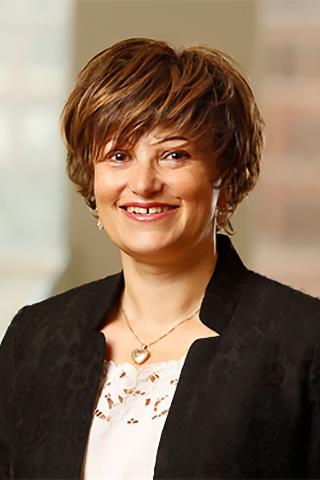
Calvi Lab
Research Overview
To survive throughout the life of an individual, hematopoietic stem cells (or HSC), which continuously give rise to all cellular blood components, must strictly regulate their behavioral choices. These choices include self-renewal, differentiation, quiescence or death. This essential regulation of stem cells is thought to be determined at least in part by the environment, or niche, in which these cells reside. The bone forming cells, osteoblasts, have been known to support and expand HSC in vitro and co-transplantation of osteoblasts with HSC can increase engraftment rate.
Work in our laboratory and others first identified osteoblastic cells as a regulatory component in the HSC niche through genetic means. A number of molecules have since been implicated in HSC-osteoblastic interaction. In fact, it has recently become evident that cells in the osteoblastic lineage can both stimulate and limit HSC expansion, promote quiescence, coordinate HSC mobilization and, when destroyed or mutated, initiate hematopoietic dysfunction. In fact, increasing evidence points to osteoblastic lineage cells as key regulators of HSC behavior, in particular in the setting of malignant hematopoiesis and response to radiation injury.
While the HSC niche is still poorly understood, we and others have begun to demonstrate the therapeutic potential of its manipulation in animal models. Our laboratory has demonstrated that osteoblastic activation by Parathyroid Hormone (PTH) expands HSC, and improves recovery from myeloablation. Thus, the central hypothesis pursued by my laboratory is that osteoblastic cells play a central role in orchestrating microenvironmental control of the behavior of both benign and malignant HSC, and that they can be targeted for therapeutic benefit.
My laboratory therefore uniquely uses techniques that bridge bone and stem cell biology to discover the regulatory components of the bone marrow microenvironment, with the long term goal of identifying targets for therapeutic manipulation.


Laura M. Calvi, M.D.
Principal Investigator
Projects
View All ProjectsPublications
- IL-1R1 and IL-18 Signals Regulate Mesenchymal Stromal Cells in an Aged Murine Model of Myelodysplastic Syndromes.; Blood. 2025 Jan 22.
- Targeting IL-1/IRAK1/4 signaling in Acute Myeloid Leukemia Stem Cells Following Treatment and Relapse.; bioRxiv : the preprint server for biology. 2024 Nov 11.
- Integrating IL-12 mRNA nanotechnology with SBRT eliminates T cell exhaustion in preclinical models of pancreatic cancer.; Molecular therapy. Nucleic acids; Vol 35(4), pp. 102350. 2024 Sep 30.
- Ultralow-dose irradiation enables engraftment and intravital tracking of disease initiating niches in clonal hematopoiesis.; Scientific reports; Vol 14(1), pp. 20486. 2024 Sep 03.
Affiliations
- Medicine
- Neurosurgery
- Pharmacology & Physiology
- Center for Musculoskeletal Research
- James P. Wilmot Cancer Center
- NIH T32 Training Grant in Immunology
- UR Stem Cell and Regenerative Medicine Institute
- Cellular and Molecular Pharmacology and Physiology Ph.D. Program
- PhD Program in Pathology - Cell Biology of Disease
- Toxicology Ph.D. Program
News
December 1, 2020
Grant Will Fund M. Kerry O'Banion's Work on Space Travel & the Immune System
September 15, 2020
Cool Technology Allows for Better Views of Cancerous Blood Cells in Quest for New Treatment
October 15, 2018
Delving Where Few Others Have Gone, Leukemia Researchers Open New Path
November 30, 2017
Dr. Laura Calvi receives the 2017 Davey Award in Cancer Research

Contact Us
Calvi Lab
601 Elmwood Ave, Box 693
Rochester, NY 14642



